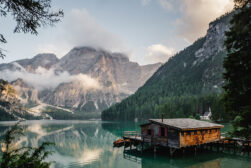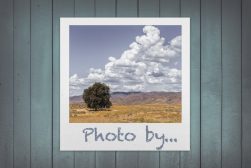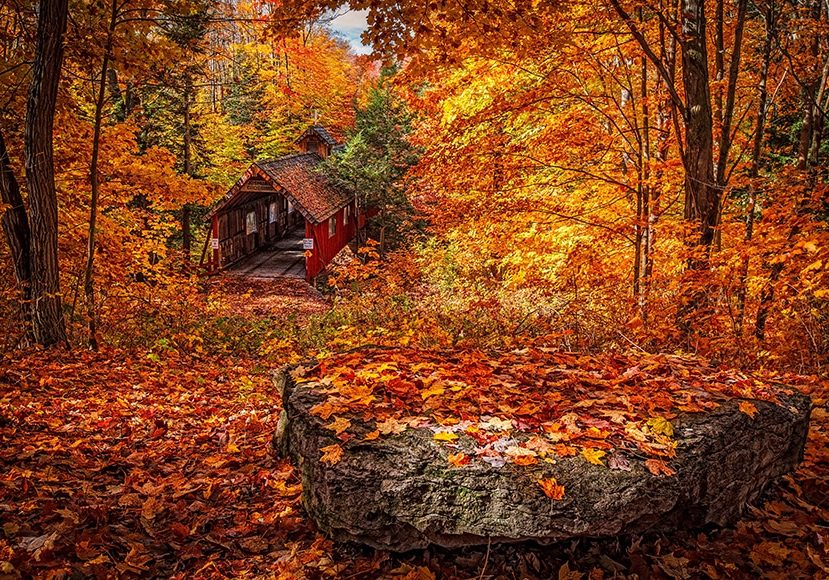
Guide to Fall Photography (Autumn Photographs)
Looking to take some great photos this Fall (Autumn)? Don't miss this guide which reveals 20 tips used by the pros to get the best images among the leaves.
Learn | Photography Guides | By Ana Mireles
Don’t you just love autumn? It’s the season that inspires you to grab your camera and go out to photograph all the coloured leaves against the blue sky.
It’s not hard to find the perfect location for portrait photography or pick up some produce at the market for your food photography.
In fact, it doesn’t matter what your speciality is as a photographer – you can make fall photography work for you.
In this post, we’ll run through some photography tips that will help you out.
Whether you want to know the best time to take fall pictures, discover some great fall photoshoot ideas or learn how photographers can approach autumn creatively, this guide has it all.
If you’re ready, let’s dive in!
20 Tips for Amazing Fall Photography in 2024
If you’re tired of the typical photos of leaves, check out these autumn photography tips to find a creative way to capture fall.
1. Look at the season’s harvests

Credit: Aaron Burden
Most people think of a pumpkin when they think about autumn’s produce. While it’s certainly one of the most iconic fall symbols, it’s surely not the only one.
Fall is a season full of fruits and vegetables that you can use in your photography. Others include corn, broccoli, figs, grapes, mushrooms and pears, just to name a few.
You can photograph the harvesting process as a documentary project. Another idea is to use them for your food photography, either cooked or raw; if you photograph people cooking or eating the produce you can also do some lifestyle photography.
Of course, the vibrant autumn produce is also fantastic for still life photography.
2. Use a polarizing filter

Credit: Lisa Fotios
Typically, polarizing filters are used to get rid of any glare that comes from reflective materials. However, they’re also excellent tools for increasing contrast and saturation. This will help you to highlight the wonderful colors of fall.
A polarizing filter can be linear or circular, and it attaches to the front of your lens. I recommend you get a circular polarizing filter (CPL) because you can adjust the effect by turning the filter.
3. Take macro photos

Credit: Tina Nord
With all the wonderful leaves and pinecones at your feet – in the most literal sense – you can pick up all sorts of subjects to photograph up close. When I say close, I mean macro.
Macro photography is done with a lens that has a short focus range allowing you to magnify your subject.
Usually, it’s done with a tripod because the focus is very critical. Experiment by adjusting your camera settings to find the depth of field that you prefer.
4. Take outdoor portraits
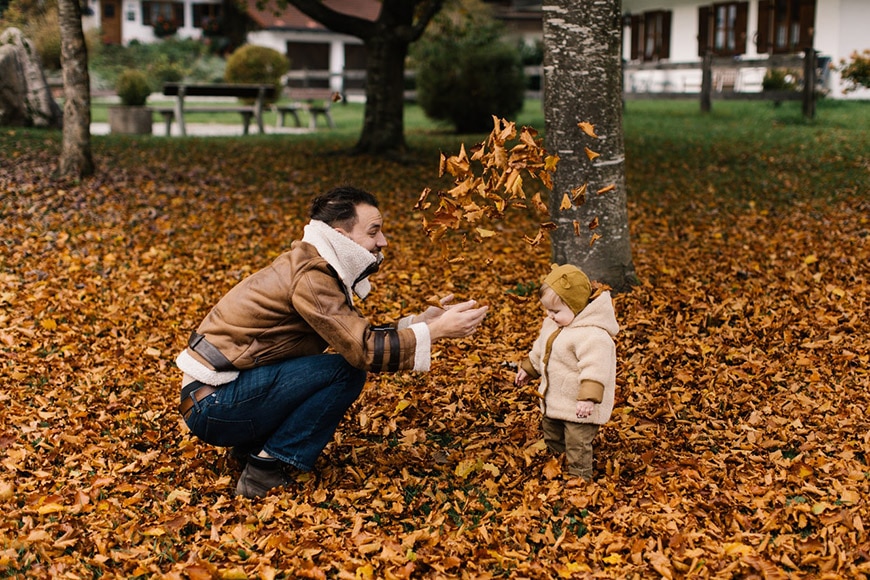
Credit: Tatiana Syrikova
The multi-coloured trees make an excellent setting for a family or couple’s portrait session. Make sure you make the most out of it by coordinating the props and wardrobe.
So, when a client asks you: what should I wear for fall pictures? Ask them to stay within an earthy colour palette: yellow mustard, different shades of brown and beige, dark purple or orange.
Also, advise them to wear comfortable clothes to feel free to play and interact with nature. Finally, check the weather conditions and remind them to dress appropriately.
If you want to try something really fun and silly, how about a pumpkin head photoshoot?
How Much Do You REALLY Know About Photography?! 🤔
Test your photography knowledge with this quick quiz!
See how much you really know about photography...

5. Try bird’s eye views
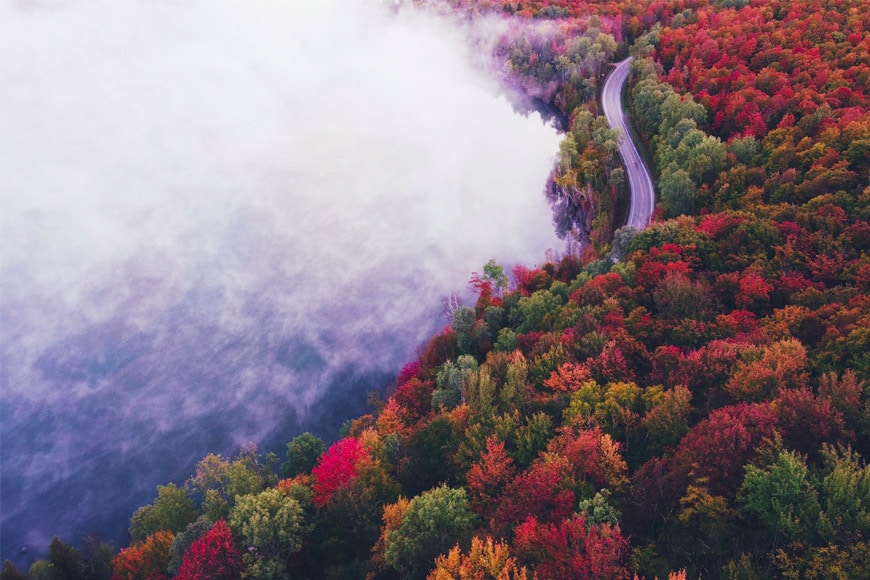
Credit: Aaron Burden
When the camera angle is from above, it’s known as a bird’s eye view – in other words, the perspective a bird would have when flying.
Looking down at the polychrome spectacle of an autumn park or forest is mesmerizing. You can capture this view with some aerial or drone photography.
If you don’t have access to this type of photography, try looking for high vantage points such as a lookout tower, or hiking up a hill.
6. Don’t forget about worm’s eye view

Credit: Matthias Zomer
Worm’s eye view is the opposite of the bird’s eye view. The idea is that you place your camera on a lower angle, looking up.
This is a common angle for photographing trees because it allows you to capture them from top to bottom – no matter how tall they are.
It’s also an interesting perspective for shorter subjects like flowers and mushrooms.
7. Look for reflections
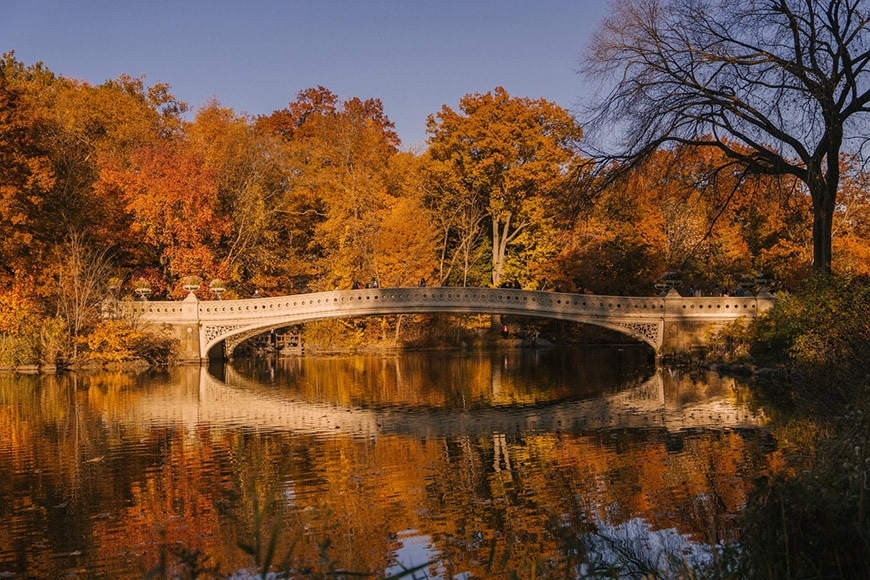
Credit: Marta Wave
Incorporating reflections in your image is a powerful composition technique. When you’re photographing a colourful fall landscape, why not double the amount of colour in it?
Find a body of water and place yourself on the opposite side to your subject. Then, try angling your camera in different ways until you find the right reflection.
If possible, try to shoot in the early morning or late afternoon to avoid hotspots caused by the sun’s reflection in the water.
8. Do a landscape photo-tour

Credit: Jonas Togo
Go on a landscape photography tour to find the best autumn scenes. Sometimes it’s easier to stay close to home and visit the park or a familiar location; however, going out of your way can really pay off at this time of the year.
You can join a guided tour with a professional landscape photographer if you haven’t done this before (if your budget allows, of course). Otherwise, you can go out on your own.
You can find new locations using Google Earth, or you can research the works of other photographers to know where your favourite photographs have been taken. Then, go out and capture those locations with your own artistic vision.
9. Create autumn-inspired still life photos
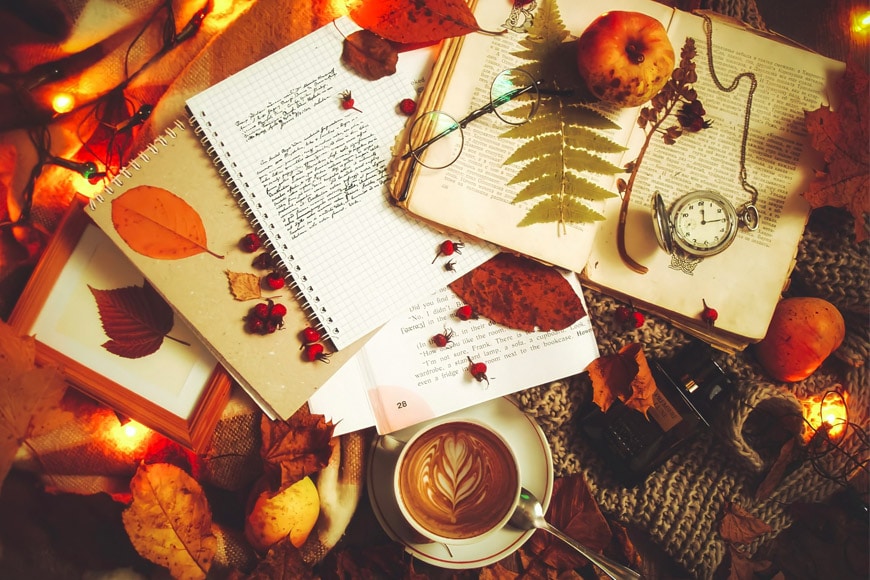
Credit: Eugene Golovesov
Still-life photography is a very flexible genre that you can use to capture the mood and essence of autumn. Since you can use any object, you can give free rein to your creativity.
Your still life can be done with the season’s produce, fall foliage, clothes and objects in fall colors, food and dishes traditionally cooked during the fall, etc.
To make a pleasing image, you need to choose the right objects and arrange them following the composition rules. Use shapes, colours and textures to balance the image, then arrange it following the golden ratio or the rule of thirds.
10. Practice your events photography skills

Credit: Brett Sayles
This time of year is full of events. Think about Oktoberfest, Halloween and Harvest festivals – just to name a few. Budding event photographers can take advantage of this to boost their experience levels.
Most events happen in the evening, so be prepared to pump up your ISO. Make sure you shoot in RAW format so you can recover more details from darker areas in post-production if needed.
11. Find autumn in urban scenes
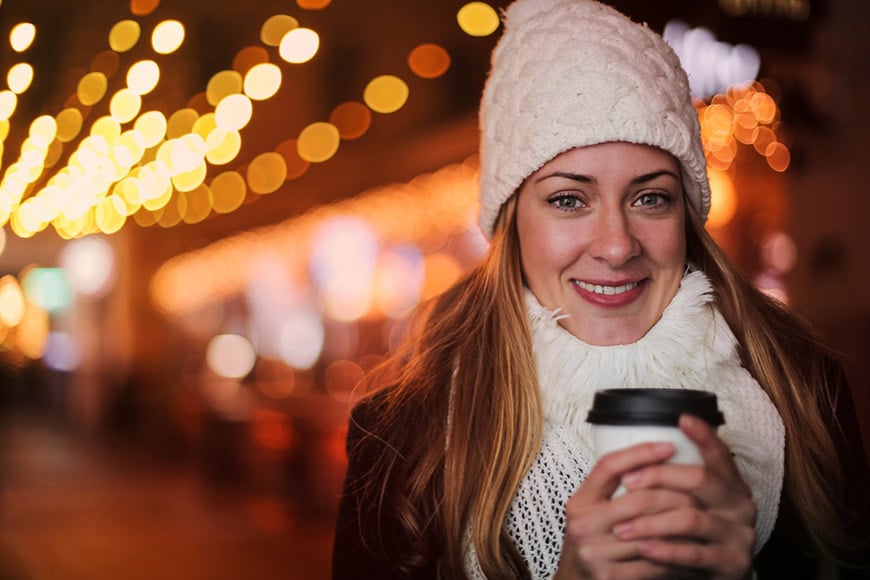
Credit: Andrea Piacquadio
Nature is an easy target for fall photos – there are beautiful scenes wherever you turn – but capturing autumn in the city is a bit more complicated.
Grab your camera, hit the town and put your creativity to work. Whether you photograph shop windows seasonally decorated or try to capture the fall colors in the streets, I’m sure you’ll have a great time.
12. Use autumn colors
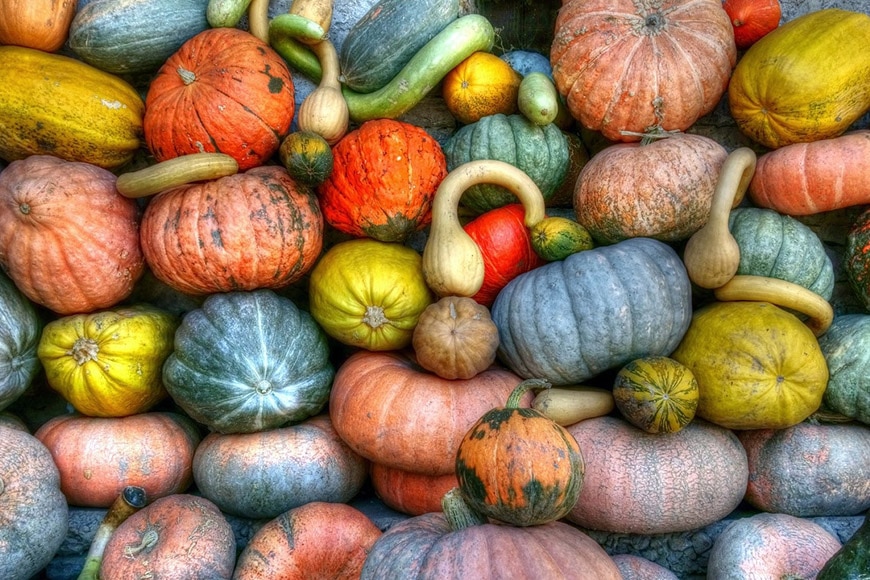
Credit: Flickr
Fall photography doesn’t have to be as literal as using autumn leaves as your subject. You can also suggest it with the background colour, combining objects with autumn colours or doing some abstract photography following the same colour scheme.
Typically, the season’s colors come from nature, so they’re inspired by the foliage and produce: greens, yellows, oranges, browns and reds.
However, there’s always an extra palette that changes according to different trends. Sometimes it’s set by fashion designers, or by Pantone’s colour of the year.
You can search for the various trends and gather inspiration from the Trends section of the Adobe Color website.
13. Bring along your pet

Credit: Tereza Hoskova
Take advantage of the beautiful autumn foliage to do a photo session with your pet. Make the most out of the location by capturing your furry friends playing with the fallen leaves.
Take multiple shots using burst mode on your camera to be sure you get the perfect moment.
Don’t forget to photograph them when they’re resting or cuddling with you and your family – autumn trees make the perfect backdrops.
14. Take fashion photos
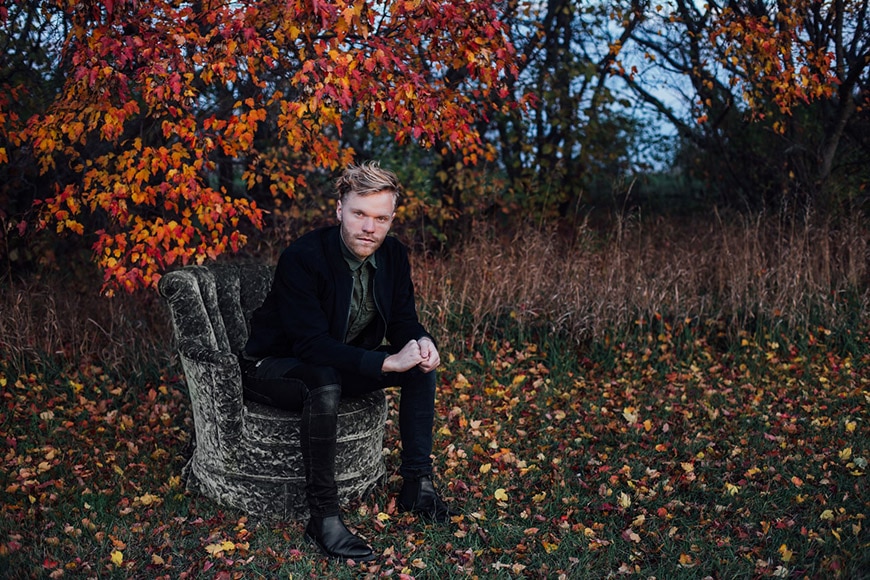
Credit: Lucas Sankey
Fashion designers always launch a fall/winter line of clothing. You can use this season to exercise your fashion photography skills by doing some outdoor sessions.
You can do some editorial shots if you have the budget for it, or you can make a look book. Either way, autumn photography and fashion are a winning combination and work well even as a home photo shoot idea if you have the right garden/foliage for it.
15. Choose the best light
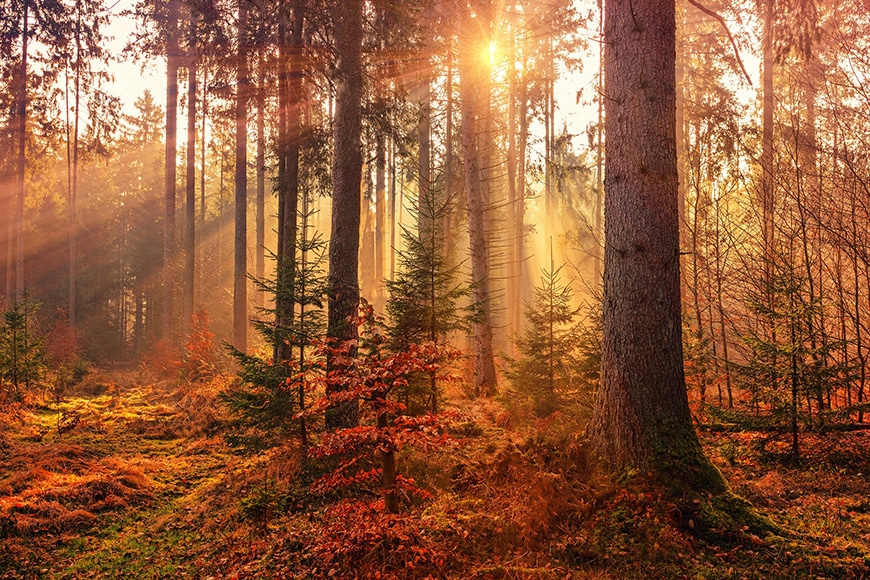
Credit: Johannes Plenio
Landscape photographers like to shoot in the early morning or late afternoon, covering the blue and the golden hour. The latter is better for autumn photography because of the warm tone it provides, and this is why it’s called the Golden Hour.
Golden hour happens during the first hour of light after the sunrise, and the last hour before sunset when the sun is close to the horizon.
The light is not very intense, so you need to use the right camera settings and a tripod to avoid camera shake.
You should use a small aperture to have a deep depth of field, as it’s the most common look in landscape photography. To achieve that you’ll have to use a slow shutter speed and raise the ISO.
16. Walk around your neighbourhood
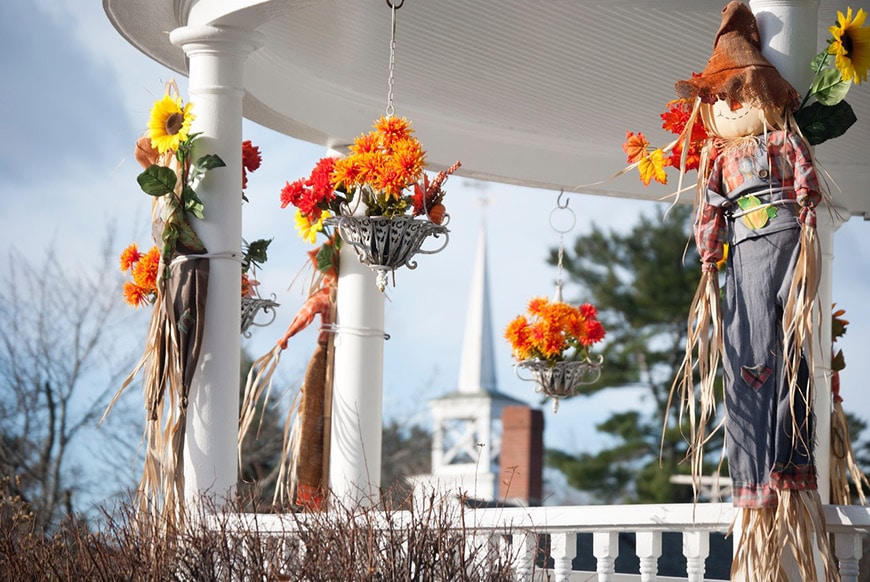
Credit: Matt Barnard
Depending on your area, stores and people’s homes might take on the spirit of the season with different decorations.
By taking a walk around the neighbourhood, you can find beautiful subjects for autumn photography and use them to practice your photography skills.
Staying close to home means that you can come back often. Try visiting the same location at different times of day to understand how light changes.
Also, review your images back home and analyse where you can improve, then go back and take some more shots – you’ll learn a lot from these exercises and your autumn photography will develop quickly.
17. Forget about Clichés
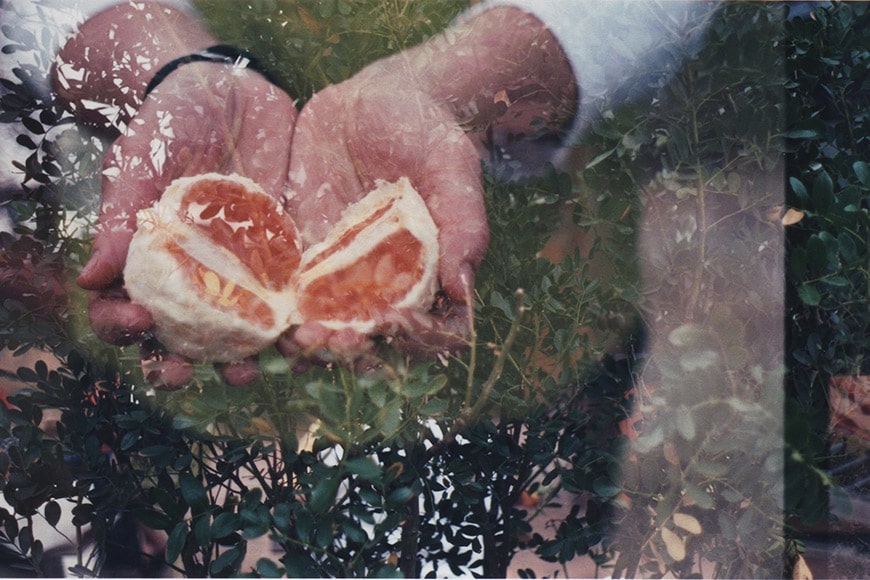
Credit: Jo Hilton
Photographic clichés are tempting, I know. You’ve seen this beautiful shot all over your social media, and you want to make it yours.
However, it’s not a good exercise for your creativity, and it definitely won’t make your images to stand out because… well, we’ve seen it before.
So, try to think outside the box. What other ways can you represent this or that subject?
Weed out the first photography ideas that come to mind – you’re probably remembering stuff you’ve seen – then the good ideas will come. Like Picasso once said: inspiration exists, but it has to find you working.
18. Avoiding clichés doesn’t mean you can’t use leaves

Credit: Sarah Trummer
While there are many things to love about fall, coloured leaves are still the most fascinating.
So, autumn photography is also about capturing leaves, but you should find creative ways to use them. This will make your images stand out from the ones done by other photographers.
19. Make conceptual projects

Credit: Unjay Markiewicz
This time of year is not only about pretty colours; it has a much deeper meaning that has been around cultures for centuries and reminds us about the cycle of life.
There are many concepts associated with autumn: change and letting go are related to the trees turning different colours and losing their foliage.
Preservation and protection relate to wildlife gathering resources to survive the intense weather conditions during the winter.
Balance is part of fall because night and day last the same amount of time during the equinox. These and other concepts can be represented in autumn photography.
20. Post-processing is important

Credit: Johannes Plenio
You can do your photo editing using the software of your choice. There are some great paid ones, such as Adobe Lightroom and Photoshop, as well as free ones like GIMP.
If you take your fall photos with your smartphone, you can download some great apps to edit them.
During post-processing, you’ll want to check the white balance – that’s always a good place to start with any kind of photograph. Then you can adjust the exposure if necessary and raise the saturation and contrast to highlight the colours.
Final Words
I hope you enjoyed these autumn photography tips and feel motivated to go out and find your personal way of representing the fall. Share your own ideas in the comments section!

Check out these 8 essential tools to help you succeed as a professional photographer.
Includes limited-time discounts.








